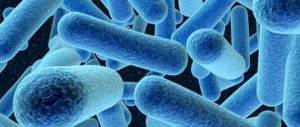Diseases of the upper and lower respiratory system rank third in prevalence after cancer and cardiovascular diseases. It can be difficult even for a doctor to diagnose a type of pathology without specialized examinations when the symptoms are similar, so it is not surprising that tracheitis and bronchitis are often considered different names for the same disease. From the point of view of the anatomical structure of the respiratory organs, the trachea and bronchi represent two completely different sections, therefore there are certain differences in the etiology, pathogenesis, clinical picture and principles of treatment of these diseases.
Causes of diseases
The main difference between tracheitis and bronchitis is the area of localization of inflammation, which indirectly determines the causes of the development of diseases. The doctor is helped to distinguish between similar types of diseases by successive stages of clinical examination, in which differentiation begins with the study of etiological and pathogenetic factors.
The trachea is anatomically located higher, combining the larynx with the bronchial tree. A wide tube formed by rings of cartilage tissue connects to the bronchi, occupying an intermediate place between the upper and lower parts of the respiratory system. Inflammation of the mucous membrane lining the inside of the trachea is most often provoked by diseases of the throat, larynx, nose and oral cavity. Due to the wide lumen, respiratory function suffers to a lesser extent than with damage to the bronchi. In the absence of adequate treatment, there is a high probability that the inflammatory process will spread to the underlying sections and lead to the development of tracheitis.
Typical causes of inflammation of the trachea:
- Dental diseases and diseases of the ENT organs - stomatitis, tonsillitis, rhinitis, pharyngitis, laryngitis.
- Prolonged exposure to cold air.
- Consequences of acute respiratory infections and acute respiratory viral infections in the absence of timely treatment.
- Increased concentrations of chemically aggressive substances in the inhaled air.
- Addiction to smoking, which leads to loosening of the tracheal mucosa and reduces its protective properties.
The bronchi are a continuation of the trachea, first branching into 2 large tubes, and then continuing to divide like a tree. The lumen in this part is narrower, so the accumulation of sputum as a result of inflammation quickly leads to the development of cough. The anatomical features of the structure of the bronchial tree, in which the right bronchus is usually shorter and wider than the left, are the reason that inflammation of the mucous membrane often develops on the right. Bronchitis can develop as an independent pathology, but more often it is a complication of diseases of the overlying parts of the respiratory system.
Reasons for the development of bronchial inflammation:
- Colds and viral infections.
- Diseases of the upper respiratory system.
- Negative external influences - smoking, poor environment, chemical hazards, the influence of allergens.
Bronchitis and tracheitis can occur in acute or chronic form, with the primary focus of inflammation most often forming in the trachea, leading to the development of complications.
Interestingly, cases of bronchitis are more often reported in adults, although in childhood both diseases occur with equal probability.
Causes of tracheitis and bronchitis
The most common cause of inflammation of the respiratory tract is a viral infection (ARVI, colds - all these are synonyms). Viruses actively circulate between people, but they can cause illness only when a person’s immunity is weakened, for example, due to hypothermia, lack of vitamins, etc.
First, the virus penetrates the epithelial cells of the upper respiratory tract, where it enters along with the air. If viruses enter the nasopharynx, the first sign of a cold will be a runny nose and sore throat, and if they enter the trachea, a cough. It is worth noting that in most cases, inflammation of the trachea appears when the infection spreads from parts of the respiratory tract located higher - from the pharynx and larynx. Thus, tracheitis is often a complication of laryngitis and pharyngitis. Inflammation of the bronchi, i.e. bronchitis, often develops after tracheitis. Such alternating damage to the organs of the respiratory system in a descending direction is very typical for a cold.
When infected with a virus, the mucous membrane begins to intensively produce sputum, which disrupts normal breathing. Coughing is a defensive reaction aimed at removing excess mucus, dust, foreign bodies, etc. from the respiratory tract.
If the phlegm is thin, it is coughed up easily and quickly, but if it is viscous and thick, the cough causes pain and does not bring relief. In sputum, which remains in the body for a long time, pathogenic bacteria multiply. In such conditions, a bacterial infection is added to the viral infection, which is more severe and dangerous to the body.
Thus, there are 2 main causes of infectious tracheitis and bronchitis:
- viral infection;
- bacterial infection.
It is worth noting that inflammation can also be associated with allergic reactions. In this case, allergic tracheitis or tracheobronchitis occurs.
The allergy is not associated with hypothermia, contact with infected people and develops only in predisposed individuals after inhaling air containing a certain allergen.
Clinical manifestations
Closely located anatomical structures belonging to the same system and having a similar structure show almost the same reaction during inflammation. An experienced doctor will be able to determine the difference by a number of signs that distinguish the course of tracheitis and bronchitis. These data are more informative in the acute form of diseases, since the chronic process leads to an erasure of the clinical picture and a decrease in the severity of symptoms.
Clinical manifestations of tracheitis:
- The temperature remains within normal limits and increases slightly.
- General health does not suffer during the day, but in the evening a person may become worse.
- The cough is accompanied by pain in the throat and chest area.
Clinical manifestations of bronchitis:
- The temperature rises above 38 degrees, and morning and evening values can differ by 2 degrees.
- The person feels severe weakness and malaise throughout the day.
- Headaches are present against the background of intoxication.
- The cough is accompanied by a runny nose and is paroxysmal in nature.
- The heart rate is increased compared to normal values.
- In the chronic form, periods of exacerbation are clearly associated with hypothermia or a weakened immune system.
The most informative sign, which can differ significantly between bronchitis and tracheitis, is cough. It is this symptom that often becomes the distinguishing factor. Inflammation of the trachea is accompanied by a strong dry cough, mainly at night, and sputum production is difficult. With bronchitis, the cough is wet, worsens in the morning, and mucus is produced in large volumes.
Bronchitis
Tracheobronchitis - a combination of tracheitis and bronchitis
In some cases, the infection affects the trachea and large bronchi at the same time. This often occurs when the infection spreads in a descending direction from the trachea to the bronchial tree. In this case, tracheobronchitis develops, the clinical picture of which combines the symptoms of tracheitis and bronchitis.
With tracheobronchitis, the cough is productive, as with bronchitis, but its attacks are accompanied by severe pain in the chest, which is characteristic of tracheitis.
It is also possible for pain to appear in the diaphragm after a long, debilitating cough.
Tracheobronchitis is characterized by frequent attacks. Their provocateur can be laughter, crying, screaming, or taking a deep breath. A person also begins to cough when mucus accumulates in the trachea.
Diagnostic procedures
The clinical manifestations of tracheitis and bronchitis, especially if the diseases occur in a chronic form, may differ so slightly that to establish an accurate diagnosis one has to resort to advanced diagnostics. Doctors prescribe laboratory and instrumental examinations, based on the results of which it is possible to establish the localization of the pathological process and prescribe the correct treatment. It is most difficult to diagnose in a child, since clinical manifestations and research data show similar findings.
Differential diagnosis plan for tracheitis and bronchitis:
- Laboratory tests of blood, urine, sputum. It is difficult to determine the difference using these tests, since the results reflect the body's overall response to inflammation. But with the help of a smear, you can identify the type of pathogen and test for sensitivity to antibiotics.
- Instrumental diagnostics. Spirometry and peak flowmetry allow one to assess the degree of suppression of respiratory function. Endoscopic studies reveal the level of mucosal damage. The most informative for differentiation is x-ray, with which it becomes much easier to distinguish acute tracheitis from bronchitis. The picture will show a noticeable change in the pattern, which is characteristic of bronchial lesions.
It is difficult to find differences in chronic pathology in adults, since a long-term inflammatory process with bronchitis and tracheitis usually leads to the development of a complex lesion - tracheobronchitis.
The main differences between bronchitis and tracheitis
What is the difference between bronchitis and tracheitis? With these pathologies, the degree of organ damage varies. The anatomical structure of the trachea is located above the bronchi, and accordingly, its lesions rarely lead to complications in the form of pneumonia.
If there is no response from the patient, the disease can spread downward, cover the bronchi, and then reach the lungs and provoke pneumonia.
What is the difference between tracheitis and bronchitis:
- Wording.
The respiratory tract is divided into upper and lower. Each department is responsible for its own functions (with tracheitis, the upper ones suffer, with bronchitis, the lower ones).
- Associated pathologies.
Inflammation of the mucous membrane in the trachea rarely occurs on its own. More often, tracheitis is not an independent disease, but a consequence of the harmful effects of third-party microorganisms. Inflammation of the mucous membrane in the bronchi can occur regardless of the activity of the agents.
Difference in treatment approach
Since the principles of therapy for bronchitis and tracheitis have a number of differences, it is important at the diagnostic stage to conduct a high-quality examination of the patient and accurately determine the location of the inflammatory process.
Distinctive features of therapy:
- With tracheitis, the main focus is on combating dry cough. In case of severe pain and debilitating attacks, drugs with an antitussive effect are prescribed, and when sputum begins to be discharged, the doctor prescribes drugs to thin it and expectorate it. Treatment usually does not require hospitalization and is carried out at home. For tracheitis, it is recommended to drink plenty of fluids, eat well, and reduce physical activity until complete recovery.
- Bronchitis with fever requires bed rest. This condition can be performed at home, but if complications threaten, the person will be hospitalized. To improve sputum discharge, bronchodilators and mucolytics are prescribed.
Symptomatic therapy is carried out based on clinical data.
Basic therapy methods
After diagnosing the body and identifying the causative agent of the disease, the doctor prescribes treatment, the scheme of which includes the following methods:
- drug treatment;
- correct daily routine;
- traditional methods;
- maintaining the indoor microclimate.
These funds are used in both cases. During the acute phase of bronchitis or tracheitis, the patient must follow some rules:
- Frequent and abundant drinking: warm tea, compotes and fruit drinks from berries, herbal infusions. The liquid not only removes toxins from the body, but also moisturizes the mucous membrane.
- Diet food. It is necessary to exclude sour, spicy, fried and hard foods. It is advisable to consume more vegetables and fruits, fermented milk products.
- Regular ventilation and humidification of the room. The temperature should be maintained at no more than 22°C, humidity from 50 to 70%. To increase humidity, it is recommended to purchase a special device or hang wet towels and place containers with water.
- Walking can begin after the temperature has settled. It is advisable to avoid drafts and gas-filled places. If you feel the slightest deterioration, you should immediately return home.
In the vast majority of cases, treatment of both diseases takes place at home. Only in severe cases, the patient is prescribed inpatient treatment.
Drug treatment.
Medications
If you have bronchitis, it is important to stay in bed and strictly follow your doctor's prescription.
What medications are prescribed:
- Bronchodilators to dilate the bronchi. They exist in the form of syrups, tablets, and solutions for inhalation. For bronchitis, the following are most often prescribed: Ipradol, Salbutamol, Izadrin, Eufillin.
- Drugs to improve expectoration of sputum: Lazolvan, ACC, Bromhexine syrup Althea.
- Mucolytics for softening sputum: Ambroxol, Doctor Mom, Ambrobene.
- Anti-inflammatory drugs: Aspirin or Paracetamol.
If the disease is caused by a bacterial infection, the doctor will prescribe a course of antibiotics:
- Penicillins: Amoxiclav, Augmentin, Flemoxin, Arlet.
- Macrolides: Azithromycin, Erythromycin, Midecamycin, Sumamed.
- Cephalosporins: Ceftriaxone, Cefazolin, Cefixime.
- Fluoroquinolones (for adults only): Ofloxacin, Levofloxacin, Moxifloxacin.
Hospitalization of a patient with tracheitis occurs very rarely; the disease is generally treated at home. Antibiotics are used only when bacteria are present, usually in aerosol form.
Other medicines:
- For dry cough: Ambroxol, Acetylcysteine.
- At temperatures above 38°C - Paracetamol or Ibuprofen;
- Antitussives: Sinekod, Libexin, Levopront, Tusuprex.
- Antiviral (if a virus is detected): Novirin, Amizon, Remantadine.
- Antihistamines: Clemastine, Loratadine, Promethazine.
Also, to improve the protective function of the body, immunomodulators and vitamin complexes are prescribed.
The difference in the treatment regimen for tracheitis and bronchitis is as follows:
- Since tracheitis is characterized by a dry cough, therapy is aimed at softening the mucus and facilitating its removal from the body.
- With bronchitis, sputum is removed better, and taking medications is aimed at removing it from the bronchi.
Medicines are prescribed only by a specialist. Self-medication can lead to serious complications.
Phytotherapy
Herbal treatment is recommended as an additional remedy in the treatment of bronchitis and tracheitis. Also, herbal medicine can be used during periods of exacerbation of chronic forms of diseases and for prevention. A few general recommendations:
- drinking plenty of fruit drinks made from cranberries, lingonberries, and rosehip decoctions;
- for a diuretic effect: horsetail, knotweed, linden, raspberry;
- for severe symptoms of intoxication: hawthorn, Adonis vernatum, motherwort.
To treat dry cough with bronchitis and tracheitis and eliminate night attacks, you can use the following recipe:
- Dry and chop coltsfoot leaves;
- Pour boiling water over the herb and cook for 30 minutes;
- Strain and take a tablespoon every hour.
The following helps remove phlegm from a dry cough:
- marshmallow;
- angelica officinalis;
- blue cyanosis;
- common angelica.
There are herbs that affect the cough center.
They are useful to take for tracheitis:
- mint;
- pine;
- thyme;
- fennel;
- eucalyptus;
- celandine.
The following means are used to thin mucus:
- Herbal mixture of coltsfoot, marshmallow root and oregano.
- Onion syrup.
- Carrot juice with honey and milk.
To restore epithelium damaged by the disease, inhalation with a decoction of pine buds or birch leaves is used.
Phytotherapy.
Physiotherapy
Physiotherapeutic procedures in the treatment of bronchitis and tracheitis are used for:
- improving the functioning of the respiratory system;
- reducing the inflammatory process;
- strengthening the body;
- improve blood circulation.
What methods are used in the treatment of bronchitis:
- Electrophoresis. Thanks to electric current, the medicine is delivered directly to the sore spot. Electrophoresis with calcium helps remove mucus from the bronchi.
- Magnetotherapy improves metabolic processes in the body, reduces inflammation and relieves pain.
- Massages using special oil. This percussion massage improves blood circulation at the site of inflammation and facilitates the discharge of sputum.
Doctors also advise doing water procedures:
- salt and pine baths;
- circular shower;
- rubbing;
- visit to the bathhouse and sauna.
Other procedures:
- UHF. The ultra-high-frequency magnetic field penetrates deeply into tissues and has an anti-inflammatory effect.
- Ultrasonic inhalations. An ultrasonic nebulizer is used, which distributes the drug more evenly in the respiratory tract.
- Inductothermy. The influence is carried out using a magnetic field. The procedure has an anti-inflammatory and analgesic effect. Has a beneficial effect on the functioning of internal organs.
The number of procedures and their duration are prescribed by the doctor.
Physiotherapeutic methods.
Folk recipes
As an additional method to the main course of treatment with medications, folk recipes are used. Many remedies are suitable for both bronchitis and tracheitis:
- Plantain leaf juice. Take juice and honey in a 1:1 ratio (mostly teaspoons), mix thoroughly and take three times a day before meals.
- Pour 1 lemon with water and cook for 10 minutes. Then squeeze the juice from the lemon, add honey and glycerin (1 tablespoon each). Take a spoonful every two hours.
- To improve the removal of phlegm, it is recommended to take lingonberry syrup with the addition of honey. Birch sap with milk will also be useful; the ingredients are mixed in equal proportions.
Medicinal mixtures for the treatment of bronchitis:
- Flax seeds + anise fruits + ginger root. All ingredients must be pre-chopped. Add to the previously prepared honey and garlic mixture. Mix and take a teaspoon three times a day.
- Finely chop the garlic and add milk. Boil until the garlic becomes soft. Grind and add mint juice (1 tsp) and honey (preferably linden 2 tbsp).
How to treat tracheitis:
- Prepare a decoction of anise seeds. Add honey and a few tablespoons of cognac. Take a spoon several times a day.
- Nettle tea. Pour boiling water over 20 grams of the plant and leave to steep for 30 minutes. A liter of this tea should be drunk in one day.
In the treatment of respiratory diseases, compresses, inhalations with a nebulizer or over steam, rubbing and massage are also used. But all these remedies can be used only after consulting a doctor.
Disease Prevention
Methods for preventing respiratory diseases help avoid problems with the bronchi, lungs and upper respiratory system. Comprehensive prevention is aimed at strengthening the body’s immune defense, combating bad habits, normalizing nutrition and daily routine. An important role in the preventive complex is played by reducing the level of occupational hazards, as well as conducting routine medical examinations for adults and children at least once a year. Bronchitis and tracheitis can develop as an independent pathology, but more often they are complications of previous diseases, so it is important to promptly treat acute respiratory infections and acute respiratory viral infections, preventing the spread of infection.
Physiotherapy and herbal medicine for bronchitis and tracheitis differences
After diagnosing the cause of tracheitis, treatment is prescribed. In addition to standard medications (mucolytics for tracheitis), patients are offered a course of physiotherapy (using mustard plasters, massage and inhalation methods) and herbal medicine with medicinal tinctures and decoctions. In the first case, it is advisable to use the techniques for the acute form of tracheitis, in the second - for its chronic course.
Physiotherapy has an anti-inflammatory effect and has a beneficial effect on the patient’s body:
- blood microcirculation improves;
- symptoms become less pronounced;
- pain disappears;
- a tonic effect is noted.
For bronchitis, mustard plasters are indicated, but they are not used so often due to the temperature, which often rises against the background of extensive inflammation.
Medicines for bronchitis and methods of treatment are selected depending on the severity of symptoms, age and characteristics of the body.
In treatment, bronchodilators have proven themselves, which expand the space in the breathing tubes and improve the process of transporting oxygen to the lungs. If necessary, antibacterial and hormonal drugs are recommended.
Treatment
Treatment of tracheid bronchitis covers a complex of measures, including antibacterial therapy, indicated when the disease develops against the background of viral infections. Among the antiviral drugs recommended are Anaferon, Umkalor, Aflubin and some others. If necessary, treatment includes taking broad-spectrum antibiotics (Cefazolin, Cefixime)
To eliminate cough and thin sputum, adults and children are prescribed mucolytics and antitussive medications:
- Lazolvan
- Ambroxol
- Mukobene.
In addition, the disease can be treated using external means, for this they use Eucabal ointment, Dr. IOM, etc.
For proper treatment of allergic bronchotracheitis in both adults and children, it is first necessary to identify the irritant and eliminate it.
During the development of the disease, patients are most often prescribed antihistamines (Claritin, Ziretek, etc.) For coughing attacks, antitussive medications (Bromhexine, Ascoril, Erespal). In case of bronchospasm - bronchodilators. The allergic form can be treated using folk remedies. For this, tea is also used from sage, mint, raspberry branches, and cherries. The complex treatment also includes breathing exercises, steam inhalations, massage, taking vitamin supplements, and following a diet.
Similarities in symptoms
Due to the fact that inflammation of both the trachea and bronchi is caused by the same infectious agents, the diseases have many common clinical manifestations. How to understand that a patient has tracheitis or bronchitis? Common manifestations of ENT diseases usually include:
- dry or wet cough;
- headache;
- muscle weakness;
- lack of appetite;
- discomfort when swallowing;
- low temperature (subfebrile condition).
A rise in temperature, muscle weakness and headache are typical manifestations of most ENT diseases, which indicate intoxication (poisoning) of the body with waste products of bacteria or viruses.
Few people know that seemingly harmless diseases can cause serious complications. Adults often suffer illnesses “on their feet,” which should never be done. Physical activity stimulates blood circulation, as a result of which the infection spreads faster throughout the body. Subsequently, this leads to inflammation of not only the throat, but also the lower respiratory tract. Frequent complications of tracheitis and bronchitis are pneumonia, abscesses, meningitis, etc.
Features of the development of tracheitis
Tracheitis is the name given to inflammatory processes that, due to damage to the body by agents of different nature (viral or infectious), occur in the upper respiratory tract. The mucous membrane of the trachea is affected (this is the main difference between tracheitis and bronchitis, which affects the bronchi).
In the first stages of development, the pathology's symptoms are similar to those of a common acute respiratory infection: the patient feels weak, his temperature may rise to febrile and high levels, and he may experience a feeling of weakness and discomfort in the throat.
Unlike acute respiratory viral infections and influenza, tracheitis causes a dry cough. This natural reflex response of the body becomes the main cause of discomfort for the patient. In the first days of the course, sputum is not produced, but the attacks are long-lasting and disturb the person, even at night. Some patients complain of the inability to take a full breath and severe pain in the sternum (near the ribs), which is provoked by coughing.
Sick children have a hard time with the inflammatory process. Their cough often leads to vomiting. Among other things, the nasal mucosa may swell due to the disease. The organs of vision are periodically affected - the eyes become watery and signs of conjunctivitis appear.
On average, on day 4, a secretion begins to form in the respiratory tract. At the beginning, the sputum barely comes out due to its thick consistency, which causes additional discomfort and excruciating pain. But subsequently, provided that the method of therapy is correctly selected, the disease recedes: sputum in a liquefied state passes away more easily, attacks become less prolonged, and the general condition begins to stabilize. After 10-14 days, complete recovery can be stated.










